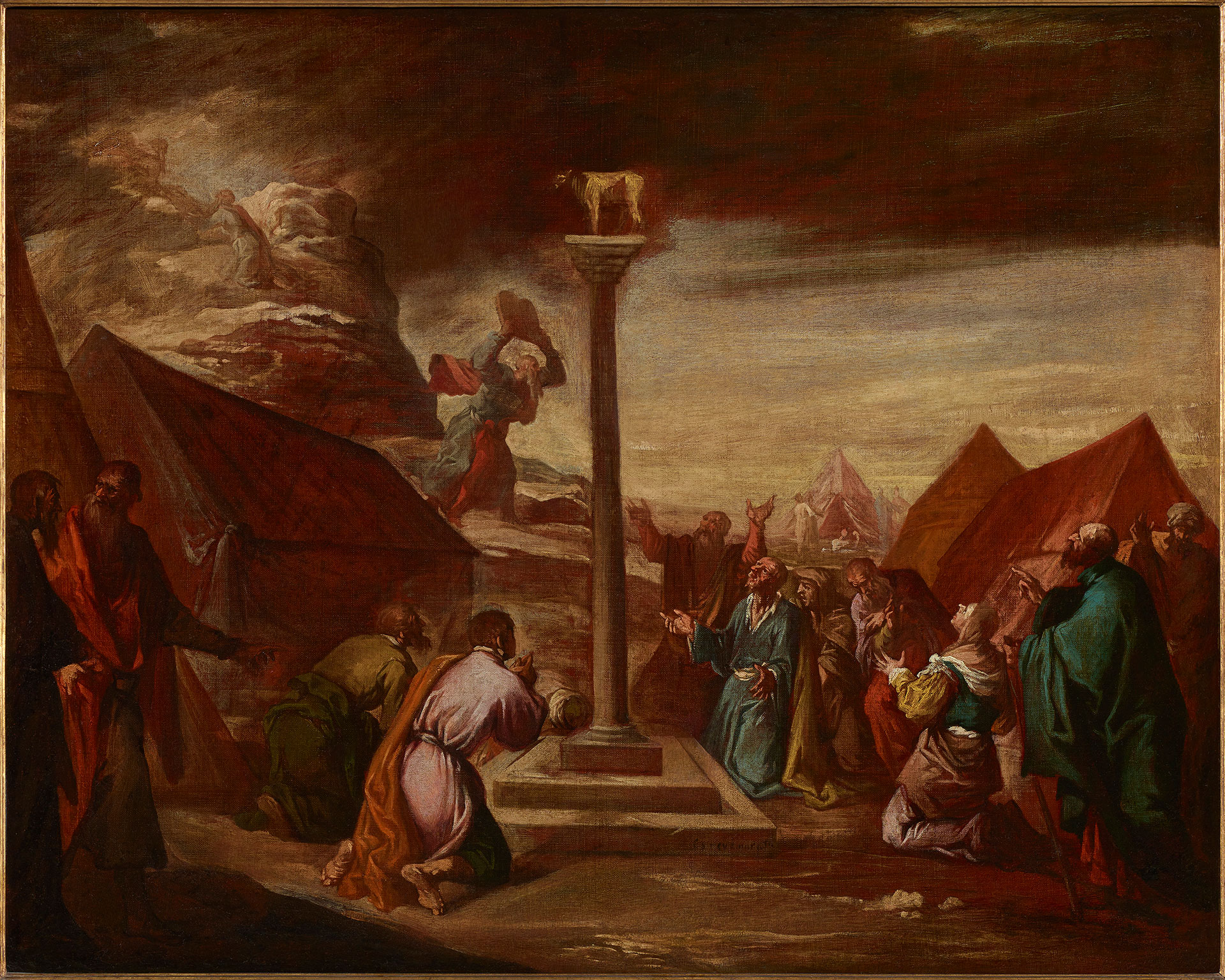
Esteban March (Valencia, 1610-1668)
The Golden Calf
circa 1650
WORK INFORMATION
Oil on canvas, 90 x 114 cm
OTHER INFORMATION
Signed on the column steps: "ESTEVE"
Among Valencian painters, Esteban or Esteve March best illustrates the impact of the models and forms of his master, Pedro Orrente. It was during his apprenticeship with the painter from Murcia that he picked up the habit of using the reddish ground so characteristic of his work, and learned to paint the idiosyncratic types which can ultimately be traced back to Bassano. However, like Orrente, he never gave up his interest in anecdotal and popular themes or in portraiture, a genre that brought him great renown. A man of tremendous talent and brilliance, Palomino describes him in his Lives of the Eminent Spanish Painters and Sculptors as "somewhat fey and reckless". This account gives us an idea of peculiar personality and artistic versatility, identifying him as an heir to the tradition of saturnine artists, known for their volatile temperaments and marked genius. Although he is often classified as a painter of battles, this is only one facet of his repertoire. March often drew on the prints of Antonio Tempesta, modernising their dynamic and dramatic quality, and in this sense he was a follower of the Italian artist Aniello Falcone, but he used a more local tone and exhibited great virtuosity in his use of drawing as a preparatory element.
Moses and the Brazen Serpent and The Golden Calf are very characteristic of March's style. Both painted around 1650, in them we clearly see the Bassanesque elements acquired directly from his master Orrente, who trained in the workshop of Leandro Bassano.
The first represents an episode from the Book of Numbers (21:6–9), when the Israelite camp was overrun by venomous snakes sent as punishment for their lack of faith. Moses pleaded with Yahweh to deliver them from the plague and, following the Lord's instructions, "made a serpent of bronze, and put it upon a pole; and whenever a serpent bit someone, that person would look at the serpent of bronze and live". This story has always been interpreted as prefiguring the cross of Calvary, as it is expressly mentioned in the Gospel of John. The painter rendered the scene in a very dynamic way, offering a panoramic view of the Israelite camp under a dark, stormy sky. The dead and the stricken appear in scattered clusters on the ground, in gesticulating poses painted with obvious skill, and the loose, energetic brushwork conveys an impression of nervous intensity. The palette is dominated by March's typical earthy tone, with a few striking highlights of bright colours—greens, yellows and blues—applied with liveliness and grace. The human types, hair and headgear and even the manner of arranging garments and poses are directly related, in some cases, to the style of his master Orrente. The identification of these remarkable canvases is an important step towards better understanding this notable yet poorly studied artist.
The second scene depicts the moment when Moses, upon descending from Mt. Sinai and finding the Israelites worshipping a golden calf made from their own jewellery, his "anger burned hot, and he threw the tablets from his hands and broke them at the foot of the mountain" (Exodus 32:19). The centre of the composition is the column on which the calf is raised: the Israelites kneeling in worship surround it, and the intensely backlit silhouette of Moses, raising the tablets aloft to smash them, stands out against stormy sky. In the upper left-hand corner we see what immediately preceded this scene: Moses, kneeling, receives the tablets of the law from Yahweh. The panoramic scene, with the tents of the wandering Israelite people, has the golden chestnut tone typical of this painter's work, and the human types, painted with short, agitated strokes, exemplify his unique style. [Alfonso E. Pérez Sánchez]

